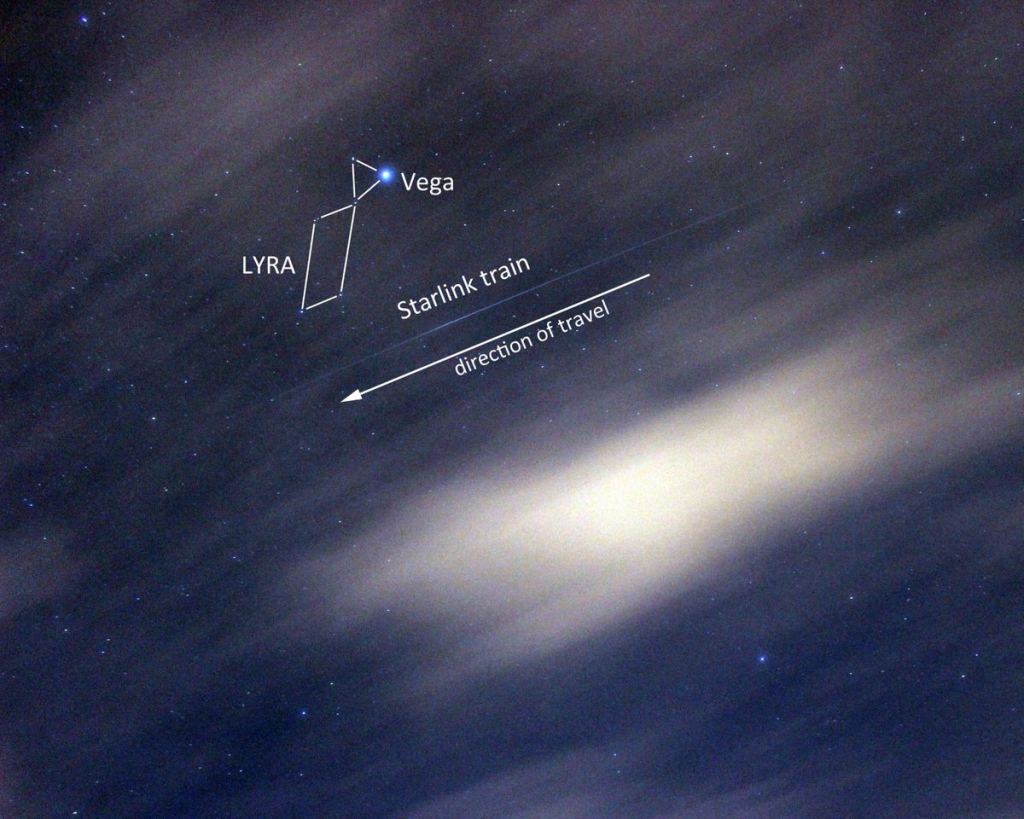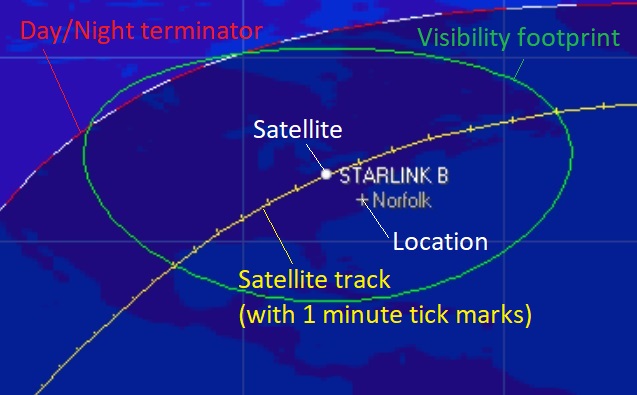Have you seen Starlink? It all started, as all good breaking astronomical events seem to do, late on a Friday night. We got the notification first from veteran satellite tracker Dr. Marco Langbroek over in the Netherlands via the venerable See-Sat-L message board, and on Twitter soon after:
“I could not help shouting ‘OAAAAH!!!’” says Langbroek, recounting the event on his blog: “Here is the video I shot, be prepared to be mind-blown!”:
SpaceX Starlink objects train 24 May 2019 from Marco Langbroek on Vimeo.
Wow, indeed.
Soon, reports started trickling in about a strange ‘trail of lights’ crossing the European sky.
It didn’t take the satellite tracking community long to pinpoint the culprit: Elon Musk’s SpaceX had launched a Falcon-9 rocket from Cape Canaveral Air Force Station in Florida the night before, with the first batch of Starlink satellites. This was the first of 60 satellites in a touted constellation that is expected to grow in number out to 12,000 satellites in low Earth orbit.

Each Starlink satellite weighs in at 227 kilograms (500 pounds), has a single solar panel for power, and uses krypton gas ion thrusters to maneuver. Musk plans to build a space-based Internet communication platform with the constellation, in a globe-spanning network that has the potential to be a key market disruptor, and perhaps a game-changer in the worldwide internet market.
But it was the visibility of the first Starlink batch that caught even seasoned observers by surprise last Friday night… and soon grew into a spirited debate over the weekend on their impact on the night sky. Contrary to expectations, the satellite train was easily visible as a glittering string of +2 to +3 magnitude stars, with some flaring up to +1st magnitude. Even now as the constellation disperses and heads to a higher orbit, we’re still getting sighting reports, three days later.
Adventures in Sat-spotting
Satellite-spotters worldwide played a crucial role in the very opening hours of the event. Typically, United States Combined Space Operations Center (CSpOC) releases tracking elements (known as Two-Line Elements or TLEs) that then percolate out to respective satellite tracking programs and apps for use by observers. Large batches like Starlink, however, are often problematic and take time to produce; NORAD’s Space-Track didn’t list the first three Starlink elements until Sunday, May 26th.

This left folks clamoring for predictions across social media. As excitement grew, we swung into action, using TLEs provided by Dr Langbroek and plugging them into the satellite tracking program Orbitron to make hand-crafted predictions for anyone that wanted ’em.
Observing Starlink
As of writing this, the new satellite train is still visible, though quickly dispersing. We’re still making nightly predictions for Europe and North America (we’re @Astroguyz on Twitter). We’re also happy to make predictions for anyone based in far-flung locales worldwide, just ask.
One interesting aspect that made the first batch of Starlink satellites so conspicuous to observers worldwide was the orbit they were placed in. The first set of Starlink satellites deployed in an orbital inclination of about 53 degrees, very similar (though not in the same path or altitude) as the International Space Station. With an initial orbital altitude of 445 kilometers (277 miles), it takes a Starlink satellite 93 minutes to orbit the Earth. This also means the the Starlink train soon entered a span of full illumination shortly after launch, much like the ISS does biannually near either solstice.
This brings to mind our sighting of another satellite constellation ‘train’ in Alaska at dusk back in February 18th, 1998 when a batch of five Iridium satellites were launched from Vandenberg Air Force base. But Iridium was made up of 66 active satellites… Starlink nearly matched that number on its first launch. Satellite constellations are nothing new to those who are familiar with the night sky, though SpaceX has now definitely raised the bar. For example, NOSS military satellites move as doubles or triplets, and the Chinese Yaogan constellation of satellites also has a similar appearance.
Starlink and their ilk have also done what other touted reflector sats such as Mayak, Orbital Reflector and Humanity Star could not: get folks out actually looking at the night sky. I think it’s intriguing that some of the very best ‘flare sats’ such as the Iridiums and Starlink were actually never designed to do so, and those that are hyped as the next ‘brightest object in the sky!’ generally tend to fizzle out.
Of course, the conversation soon turned to the possible impact that Starlink will have on the night sky. Light pollution and unwanted streaks of satellites through astrophotos are nothing new, though Starlink will exponentially add to the problem. Perhaps, the controversy around Starlink in the astronomical community will inadvertently serve to bring the issue of mounting space debris and light pollution into public consciousness. Musk has stated that engineers plan to look at ways to minimize satellite visibility on subsequent launches as they fan out into their respective orbital slots. Maybe they can take a hint from the U.S. Department of Defense’s infamous ‘vanishing spy satellite’ Lacrosse-5? There is also no word from SpaceX as the whether they plan to make provisions for reentry of the satellites at the end of their respective careers.
If they help billions of people in remote locations inexpensively access the internet, it’s a price I’d be willing to pay.
— Fraser Cain (@fcain) May 27, 2019
But if you can throw up a few Starlink-chassis space telescopes, I’m sure that’ll smooth things over with the astro community. Especially since they’d be able to return the data quickly via… Starlink.
— Fraser Cain (@fcain) May 27, 2019
This also comes as other companies, including Amazon (Project Kuiper), Leosat Enterprises, One Web and Telesat all plan to launch communications constellations of their own. The next Starlink launch is tentatively set for September 2019.
Heavens-Above is now listing the Starlink constellation on its main page. In the meantime, keep watching the skies, for a Starlink pass near you.


I hear Fraser ask, “What will people say when O’Neill cylinders populate the sky?” Fraser, Gerald O’Neill envisioned the first habitat at L5 of the Earth-Moon system, sharing the Moon’s orbit 384,400 km away. At that distance, I don’t think a few 32 km objects that take 27.3 days to orbit will disturb astronomy like 12,000 points of lights in LEO.